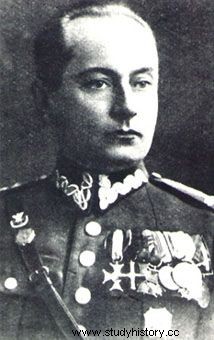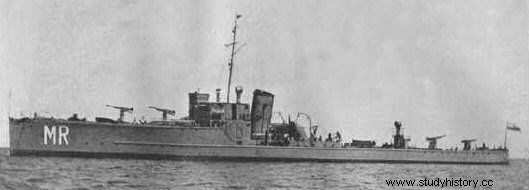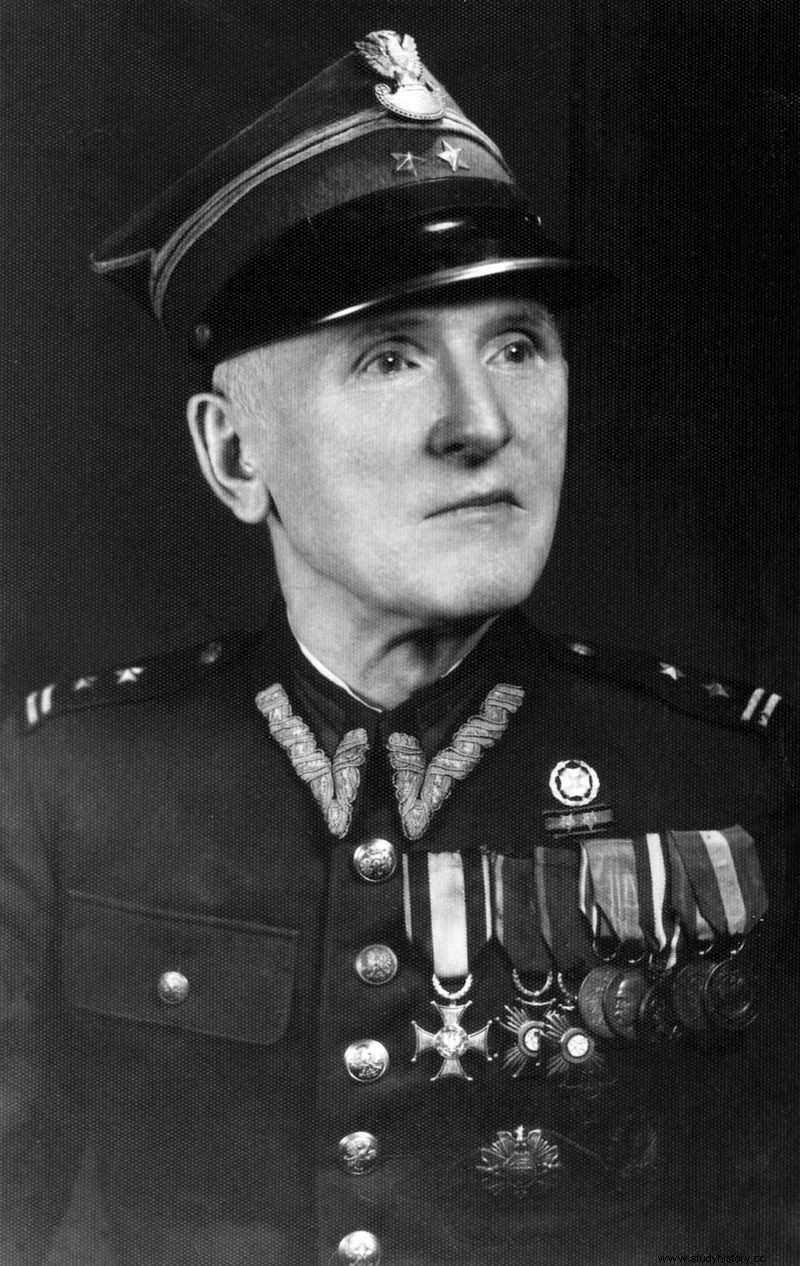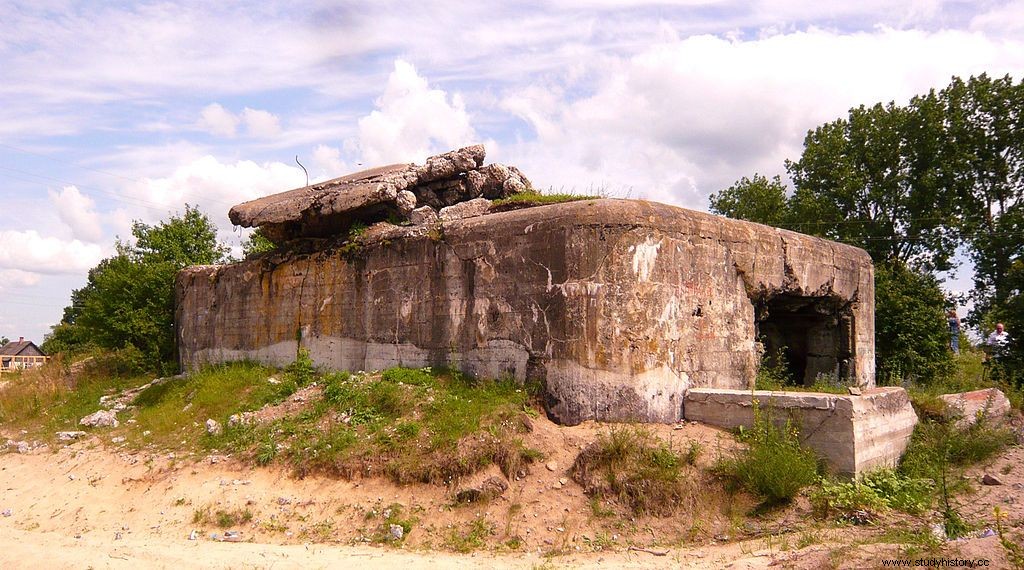Their names, words, and most of all - their deeds have become legendary. In the face of death, they gave a true display of courage and bravado. They showed what honor is in battle. They stood in the way of overwhelming enemy forces and "carried out impossible orders".
In September 1939, Polish soldiers fought against two military powers:the Wehrmacht and the Red Army. Faithful to the military oath, they tried to fulfill their duty to the Motherland to the end, showing fortitude and bravery in battle. The deeds of some of them have become a symbol of heroism on the battlefield.
1. Colonel Kazimierz Mastalerz
Kazimierz Mastalerz was the commander of the 18th Cavalry Regiment, part of the Pomeranian Cavalry Brigade and operating in the area of Chojnice. The town became the target of the German attack on September 1st because there was an important railway junction here.
After the initial successes of the defense, Chojnice was attacked by the units of the 20th Motorized Division. Two battalions of Polish infantry were in danger of being cut off. They had to be withdrawn. This task was to be facilitated by the counterattack of the 18th Cavalry Regiment.

Colonel Kazimierz Mastalerz
Mastalerz, after getting acquainted with the commands of the command, established an action plan. He seemed so incredibly risky to one of the young officers that he dared to protest. Colonel Mastalerz then uttered the words that became legendary: Too young gentleman, lieutenant, to teach me how to obey impossible orders .
Polish cavalrymen struck furiously on German motorized infantry near the village of Krojanty . During the charge, the brave Colonel Mastalerz was killed in the fire of the German machine guns, heavy losses were suffered, but the march of the German division was stopped for several hours. In recognition, the regiment was later decorated with the Order of Virtuti Militari.
2. Naval Lieutenant Jacenty Dehnel
At the outbreak of the war, he was the deputy commander of the training ship ORP "Mazur". On September 1, 1939, this ex-torpedo boat stood at the pier of the naval port in Oksywie. At around 1pm, German planes attacked. The Polish ship responded with fire, and Lieutenant Dehnel personally operated the anti-aircraft Maxim . When one of the bombs hit the pier right on the side of the ship, some of the crew fled.
Mazur took water through the hull, pierced by debris and began to sink. Regardless of this, Dehnel jumped to the anti-aircraft 40mm Vickers cannon and together with another sailor, standing knee-deep in the water, continued firing at the German bombers. The shelling only stopped when ORP Mazur sank. Lieutenant Jacenty Dehnel was the last to leave his deck.

Training artillery ship ORP Mazur in the period 1935-1939
The heroic attitude of Lieutenant Dehnel gained publicity even during the war. President Roosevelt's adviser, Admiral William Leahy, summed it up at the time:
Who knows the history of the Polish torpedo boat "Mazur" cannot help but feel proud. The courage of the Polish crew, who shot the last until the water flooded the ship's guns, is the courage of not only Polish sailors, it is the courage of all free people .
Lieutenant Dehnel fought on the Hel Peninsula until the end of the campaign. He survived the war and was twice awarded the Order of Virtuti Militari for his heroism.
3. Second Lieutenant Stanisław Skalski
When the war broke out, he served in the 142nd Fighter Squadron of the 3rd Fighter Squadron of the 4th Aviation Regiment from Toruń. He flew the P-11c fighter. During the first week of combat, this young Polish air force officer became the first Allied fighter ace with five sure shots.
He had his first shot down, as a team with Lieutenant Pisarek, on September 1, 1939. It was the reconnaissance Henschel Hs-126. After all, the knightly Polish pilot landed near the downed German machine and dressed both wounded crew members, one of which he terrorized with a silver cigarette case imitating a weapon!
He also saved the Germans from angry peasants and helped put them in a hospital. By the standards of the Second World War, this was unusual behavior. On September 2, Second Lieutenant Skalski achieved his greatest campaign success, shooting down two Dornier Do-17 bombers in a single combat flight.
The next day, as a team again, he shot down an Hs-126, his stubborn character once again showing itself. He circled the shot down pilot for so long, not letting him hide in short bursts of machine guns, until he was taken prisoner by Polish soldiers.
In the same flight, alone, after fierce and dynamic air combat, he shot down another Henschl Hs-126. Second Lieutenant Stanisław Skalski achieved his last successes in Poland on September 4. On that day, together with two colleagues, intercepted and damaged the German Dornier Do-17 bomber .
Junkers Ju-87 Stuka was the target of our ace in the next flight. On September 17, 1939, he and the rest of the personnel of his mother unit were evacuated to Romania. Thanks to his achievements during the war, Stanisław Skalski became a legend of Polish aviation.
4. Captain Tadeusz Semik
He was the organizer and commander of 151 fortress company, consisting of seventy hard highlanders from Żywiec and Podhale. The company manned four unfinished combat bunkers at the Węgierska Górka resistance point.
On September 2, 1939, Polish fortifications stood in the way of the German 7th Infantry Division. From 2 p.m., the Germans pounded them with heavy fire from their artillery for two hours. The advance of their infantry, however, was repelled by our defenders. The attacker then changed tactics and created special assault groups, consisting of sappers and flamethrowers. Each fort was to be conquered individually.
The attack began at night. At that time, the crew of one of the bunkers evacuated. The other three continued to fight. As many as forty stormmen approached the fort commanded by Captain Semik, all of them were killed with grenades by the Poles. Three more attacks were bloodily repulsed that night. Only in the morning of September 3, two Polish shelters fell. Only the fort of Captain Semik remained, on which the entire momentum of the German strike was concentrated.

Lieutenant Colonel Tadeusz Franciszek Semik
The Germans surrounded the Polish bunker, threw grenades and dynamite through the gaps, their artillery fired at arrowslits and armored doors. Nevertheless, ours continued. Captain Semik fought as a gunner for an anti-tank Bofors, sending missiles at German armored vehicles . He was injured with that cannon.
The Poles surrendered only when the Germans threw a large explosive, the explosion of which lifted the shelter up . Nine of its twenty men, including the commander, survived. He himself spent the entire war in the oflag. For his services, he was awarded the Bronze and Silver Cross of Merit and the Order of Virtuti Militari. The Germans lost two or three hundred soldiers near Węgierska Górka.
5. Second Lieutenant Jan Bołbott
He was a reserve officer of the Polish Army. In August 1939, he was mobilized to the KOP Fortress Battalion "Sarny", where he took the position of the commander of the platoon "Tynne" in the 4th company commanded by Captain Markiewicz. His platoon manned a reinforced concrete bunker in Tynn. After September 17, 1939, when the Red Army struck, this area became part of the Soviet 60 Rifle Division.
Soviet troops, supported by tanks, approached the Polish fortifications at dawn on September 19 . Poles defended themselves like lions. Second Lieutenant Bołbott reported to Captain Markiewicz on the phone about his position. Artillery was beating the shelter, enemy tanks were driving up close, shooting ranges were hit by cannons' fire .
Soviet fighters, regardless of the losses, were pummeling the bunker with flammable materials Moreover, they erected barricades right in front of the Polish barrels to neutralize our missiles. They paid a huge price for it, over a hundred bodies of enemy soldiers were in the field of view of Polish soldiers.

The bunker where 2nd Lt. Jan Bołbott.
Poles also suffered heavy losses, more soldiers died, and the ammunition was running out. Due to the acrid smoke, they were forced to fight in gas masks. Captain Markiewicz had the last conversation with his subordinate around five in the morning on September 20.
Second lieutenant Bołbott reported then that the neighboring shelter had been captured. The young officer sensed that his end was also approaching . He turned to the commander with a last request. As Captain Markiewicz recalled:
He tells me that he is 6 months after the wedding and that his wife lives in Lublin - he gave me her address. He asks me to let his wife know, after successfully getting out of the fight, that if he were to die, let him know that , thinking about his homeland until the last moment, he was also thinking about her.
Second Lieutenant Bołbott was killed and fifty of his soldiers with him. His heroism was only rewarded half a century later . In 1989, Second Lieutenant Jan Bołbott was posthumously honored by the President of the Republic of Poland in exile Ryszard Kaczorowski with the Silver Cross of the Order of Virtuti Militari. During these decades, the authorities of the Polish People's Republic condemned him to oblivion.
